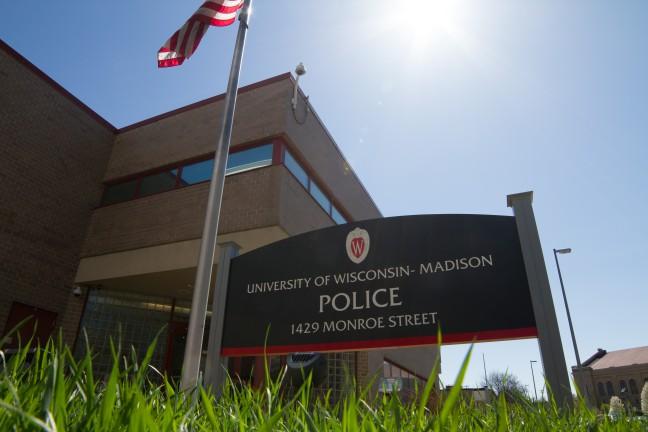As communities nationwide debate the use of body cameras for police, University of Wisconsin Police Department officers will begin wearing them, with two upcoming forums discussing their implementation.
After a trial with one camera funded through a grant, the department plans to distribute 10 more cameras to its officers by the end of the year.
UWPD will hold two forums regarding the installation of body cameras May 6 at 6:00 p.m. and May 7 at 2:00 p.m. at Union South.
The news comes amid a national debate focused on how scrutinized police officers should be, with tragedies like the officer-involved shooting of 19-year-old Tony Robinson accelerating those discussions.
Yet UWPD’s consideration of body cameras is nothing new, spokesperson Marc Lovicott said, as the department has contemplated using them for the past two years.
UWPD sees the use of body cameras as a positive step for investigations and situations in which an officer’s conduct is called into question. He said UWPD will reach out to the public so policies adhere to public concerns before they are officially implemented, Lovicott said.
Lovicott said the department is currently collecting and testing information to create the best policy for the body cameras.
The campus forums will allow the public to discuss possible concerns and consider feedback, Lovicott said. But despite any objections that may arise during the conversation, Lovicott said UWPD will forge ahead with its plan for the cameras.
“While we want to engage in a positive discussion, this is not a forum to debate the use of body cameras,” Lovicott said. “We are going to use them.”
Lovicott said concerns over body cameras often revolve around issues of privacy. For instance, he said if a police officer enters a hospital with a body camera on, they must exercise caution because of patient confidentiality.
Privacy is an issue many people have not considered enough, said Michael Kyle, a former law enforcement officer and graduate student researching the implementation of body cameras at Southern Illinois University.
Kyle said departments must consider victim privacy and witness safety. He also said concerns often surface regarding who should view the footage once a department enters it as evidence and whether that footage becomes a public record.
Another problem he encountered in his research is the officers’ fears that the footage will cause further disagreements over appropriate amount of force, Kyle said.
“They fear the public may become more upset because they simply disagree about what level of force is appropriate,” Kyle said.
But Kyle said it is likely body cameras will become more widespread as technology improves and prices go down, similar to what happened with dash cameras in patrol cars.
Additionally, he said body camera usage will increase in part due to increased media scrutiny on officer conduct.
Currently, body cameras range from $800 to $1000, not including sometimes hefty expenses for storage and processing, Kyle said. Lovicott said UWPD received funding for the next 10 cameras from a government grant.
“We will be working throughout the summer on this policy and by the end of the year we hope to have 10 cameras deployed,” Lovicott said. “The goal is to eventually get more cameras and deploy them onto more officers.”














